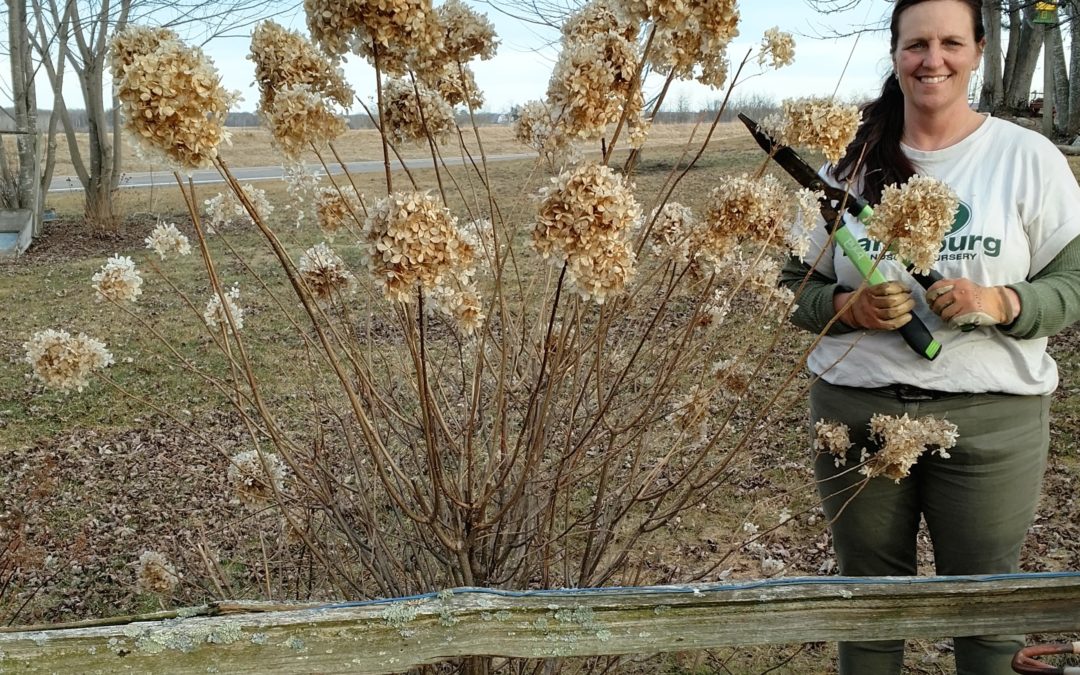Plants to leave up for Winter Interest and/or for the birds to enjoy the seed pods:
Aster
Black Eyed Susan (Rudbeckia)
Coneflower (Echinacea)
Globe Thistle (Echinops)
Hydrangea
Joe Pye Weed
Liatris
Ornamental Grass
Tall Garden Sedum
Plants that can/should be cut back in the fall after a killing frost:
Amsonia
Anemone
Artemesia
Astilbe
Baptisia
Bleeding heart
Blanket Flower (Gaillardia)
Brunnera
Butterfly Weed (Asclepias)
Campanula
Cardinal Flower (Lobelia)
Catmint (Nepeta)
Columbine (Aquilegia)
Cushion Spurge (Euphorbia)
Daisy
Daylily (Hemerocallis)
Delphinium * Cut at 6-8 inches
Filipendula
Foam Flower (Tiarella)
Geum
Hosta
Lady’s Mantle (Alchemilla)
Lamb’s Ear (Stachys)
Ligularia
Lupine * Cut back at 6-8 inches
Meadow Rue (Thalictrum) Some varieties will self-seed; can leave till spring if desired
Salvia
Sneezeweed (Helenium)
Tickseed (Coreopsis)
Turtlehead (Chelone)
Veronica
Yarrow (Achillea)
These plants are prone to pest and disease. They should be cut back in the fall and
foliage disposed of rather than composted:
Bearded Iris
Bee Balm (Monarda)
Japanese Anemone
Penstemon
Peony
Tall Garden Phlox
Plants that should be left for the winter and cut back in the spring:
* Some plants require only a small clean up vs. total cut back.
Bergenia *
Chrysanthemums
Coral Bells (Heuchera) *
Creeping Phlox *
Dianthus *
Foxglove (Digitalis)
Poppy
Russian Sage (Perovskia) * Cut at 6-8 inches

